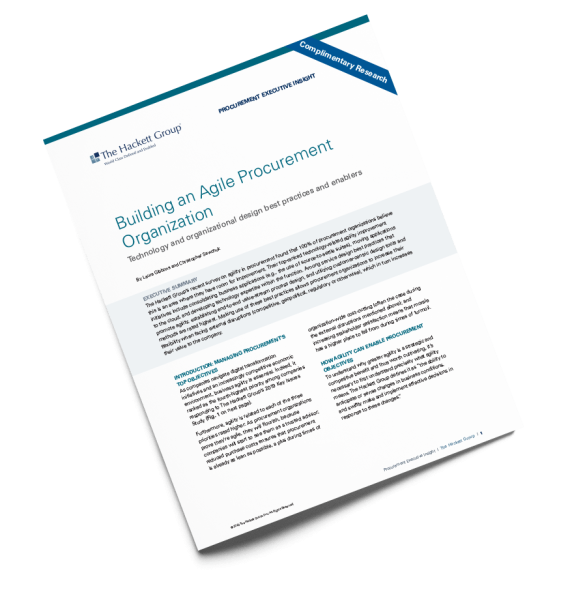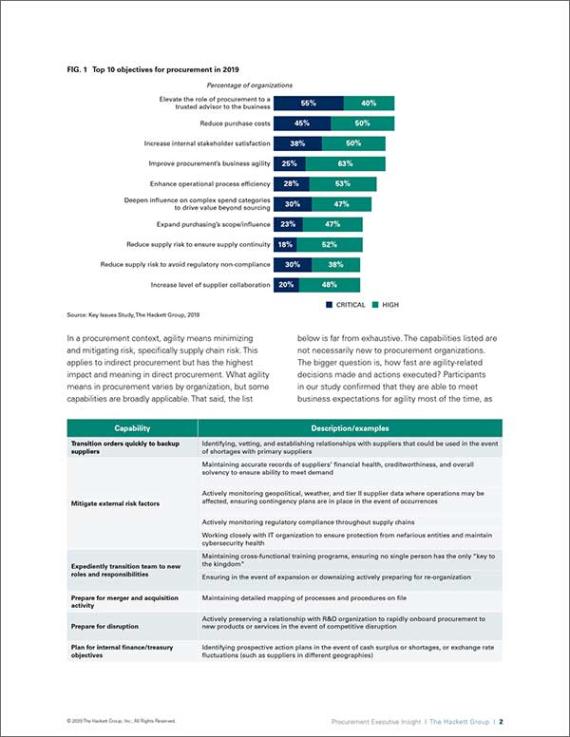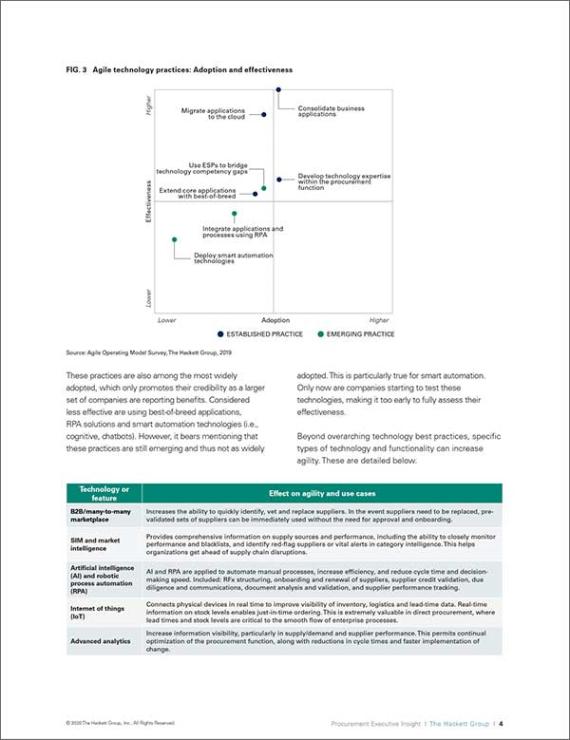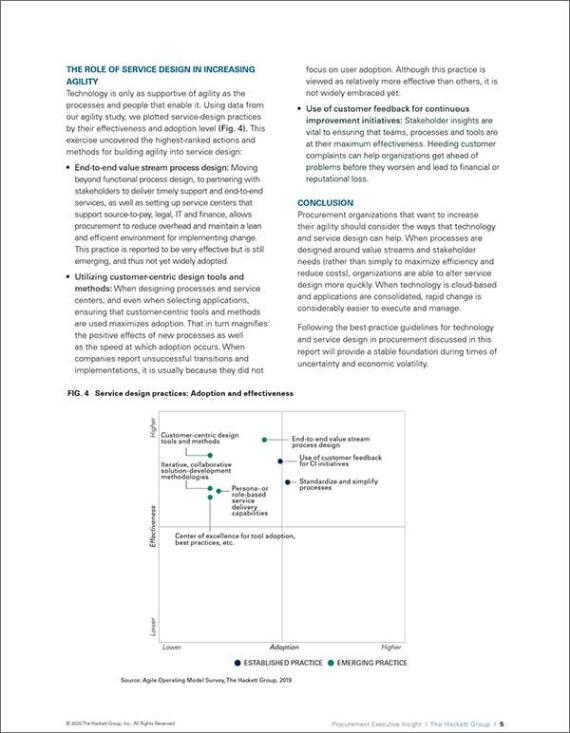Building an Agile Procurement Organization
There’s no such thing as too agile. In this report, The Hackett Group reveals procurement strategies for businesses seeking to move their procurement tools to the cloud and develop procurement technology success and expertise. The report shows how procurement automation is becoming crucial for saving costs, minimizing risk, and creating flexibility to deal with disruption.
One discovery of the Hackett Group’s recent survey on agility in procurement was that all procurement organizations recognize the need to improve agility and flexibility in their processes, starting with consolidating business applications (e.g., the use of source-to-settle suites), moving applications to the cloud, and developing technology expertise within the function.
In terms of promoting procurement agility, the highest ranking service design best practices are establishing end-to-end value-stream process design and utilizing customer-centric design tools and methods. By implementing these changes, procurement teams aim to increase their flexibility when facing external disruptions (competitive, geopolitical, regulatory or otherwise), which in turn increases their value to the company.
With new e-procurement technology and service design practices, procurement leaders can prepare their organizations for any eventuality. Discover which practices are most effective to help your procurement organization cope with uncertainty and pave a path to success in procurement optimization.
FAQ



